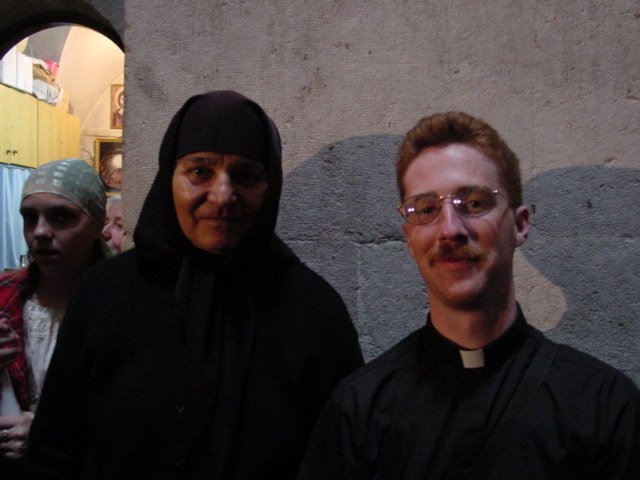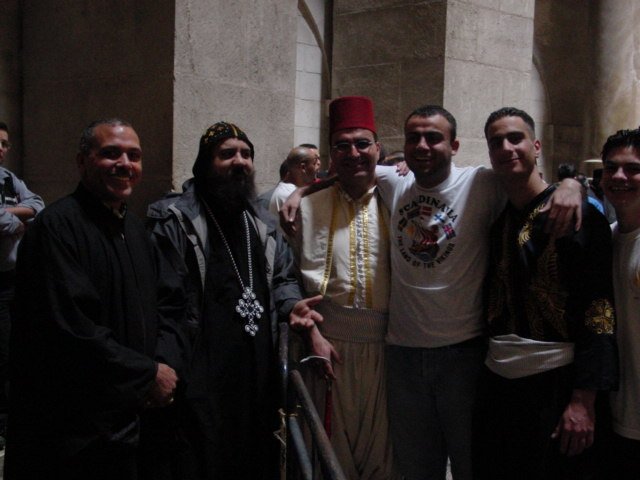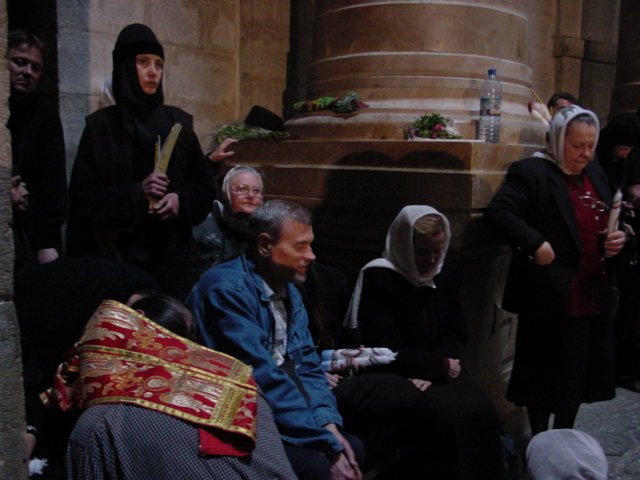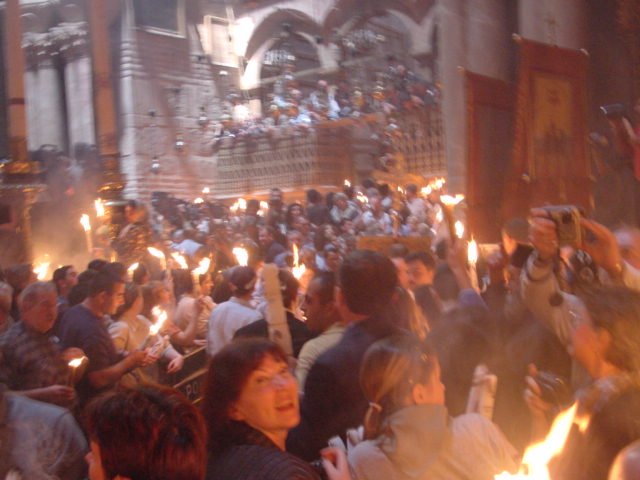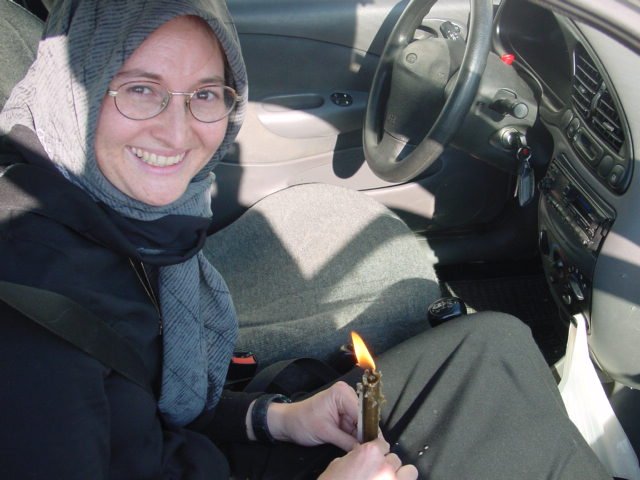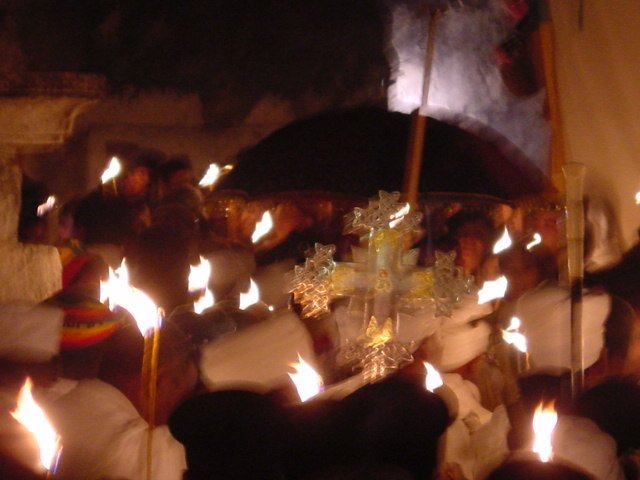May 4, 2002
Marthame with Sister Anna, a Romanian nun who kindly explained the liturgy to us.
Holy Saturday, or sabt in-nour (Saturday of Light).
Young Egyptian Christians with an Egyptian Coptic priest.
We arrived at the Holy Sepulchre at 11:00 in the morning for the liturgy of the Holy Fire. Thanks to the Armenian Patriarchate (and the lack of pilgrim crowds), we got passes to be inside the church for the service. We were waiting with some of the ex-pat Anglican community, as well as a small group of Ukrainian Orthodox accompanied by several priests and nuns. We visited with Sister Anna, a Romanian nun serving in the Greek Orthodox Patriarchate, who was happy to help explain things to us and to share her seat for some much-needed foot relief.
The crowds await the Holy Fire.
The first procession belonged to the Arab Orthodox community. A group of young men entered the church playing drums and chanting enthusiastically. It was very familiar to us, but contrasted greatly with the severity of the Greek liturgies of these days.
At about 2:00, the bells rang 33 times (for each year of Christ's life), signaling the arrival of the Greek procession. They processed around the Sepulchre three times (a symbol of the Trinity, and a common practice in Orthodox services) carrying banners. The faithful were anxious to touch the banners and receive blessings from them, touching their bundles of 33 candles to them.
The faithful wait for the Greek Orthodox Patriarch.
Orthodox tradition holds that the Greek Patriarch enters the Holy Sepulchre on Saturday accompanied by a couple of witnesses with an unlit candle. He lays the candle of the stone of the tomb. After a while, light shoots through a crack in the stone (which the truly believing can see like bluish lightning in the Church), miraculously lighting the candle, which is then passed throughout the church - the "Holy Fire" is also brought to other Orthodox Patriarchs (delivered by lantern and plane these days) to share this miracle.
The Greek Orthodox Patriarch emerges from the Holy Sepulchre with candles lit.
While we were not faithful enough to see the flash, there was no mistaking the arrival of the light. A great, loud cheer went up, and the bells began to peel. The fire quickly passed throughout the Church, from one bundle to another (33 candles together make quite a torch). It was, at the same moment, thrilling, moving, and terrifying, as we were tightly-packed in with very enthusiastic people jumping and cheering with big sticks of fire.
Fortunately, after a few minutes, everyone put out their big packs of candles, a few people keeping small single candles lit. The Ukrainians were noticeably moved, touching their hands to the fire and rubbing their faces. We had wanted to burn Abuna Tom'ie's candles with the Holy Fire, but had left them back with our friends in East Jerusalem.
As the light is passed, the Holy Sepulchre erupts in rejoicing.
We were able to transport the fire (from candle to candle) as we walked across the Old City, through a visit with friends in West Jerusalem (thanks to a tea candle) and for the car ride back to Abuna Tom'ie's candles. Clothes and arms coated in hot wax was the price, but Marthame's arms were already too hairy.
The light passes from candle to candle as bells ring in celebration.
The crowds continue to share the light with one another.
Elizabeth holds our candle, successfully lit from the Holy Fire.
The Ethiopian Orthodox celebration of Holy Saturday on the roof of the Holy Sepulchre.
After supper, we headed back to the Holy Sepulchre to see the Ethiopian procession of the Holy Fire, which is markedly African in contrast to the Greeks. We headed up the stairs from the Courtyard, passing through the Ethiopian churches. Pilgrims cloaked in white were packed in there, looking as though they may have been sleeping there for a couple of days. After worship in the tent on the roof, the community processes around the rotunda three times. The church's Custos (equivalent of a Bishop) is under a bejeweled umbrella in the midst of the procession, which quickly becomes one of drumming, singing, and dancing. Many Arab Jerusalemites come to see this, apparently one of the most popular events of Holy Week.
We headed back to Nazareth, deciding to forego the Greek Easter Vigil, so that we could return to Zababdeh in the morning in time for worship.

